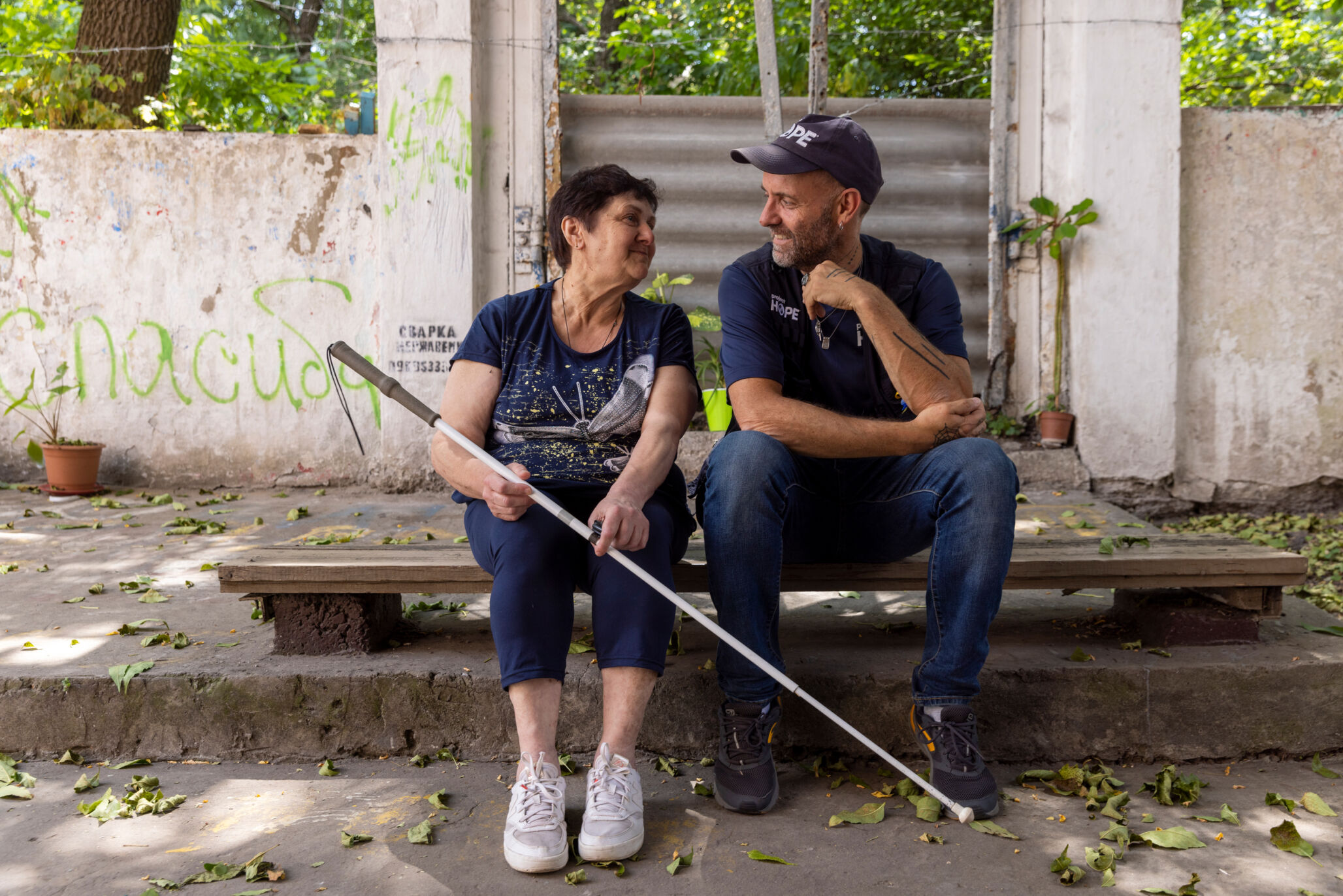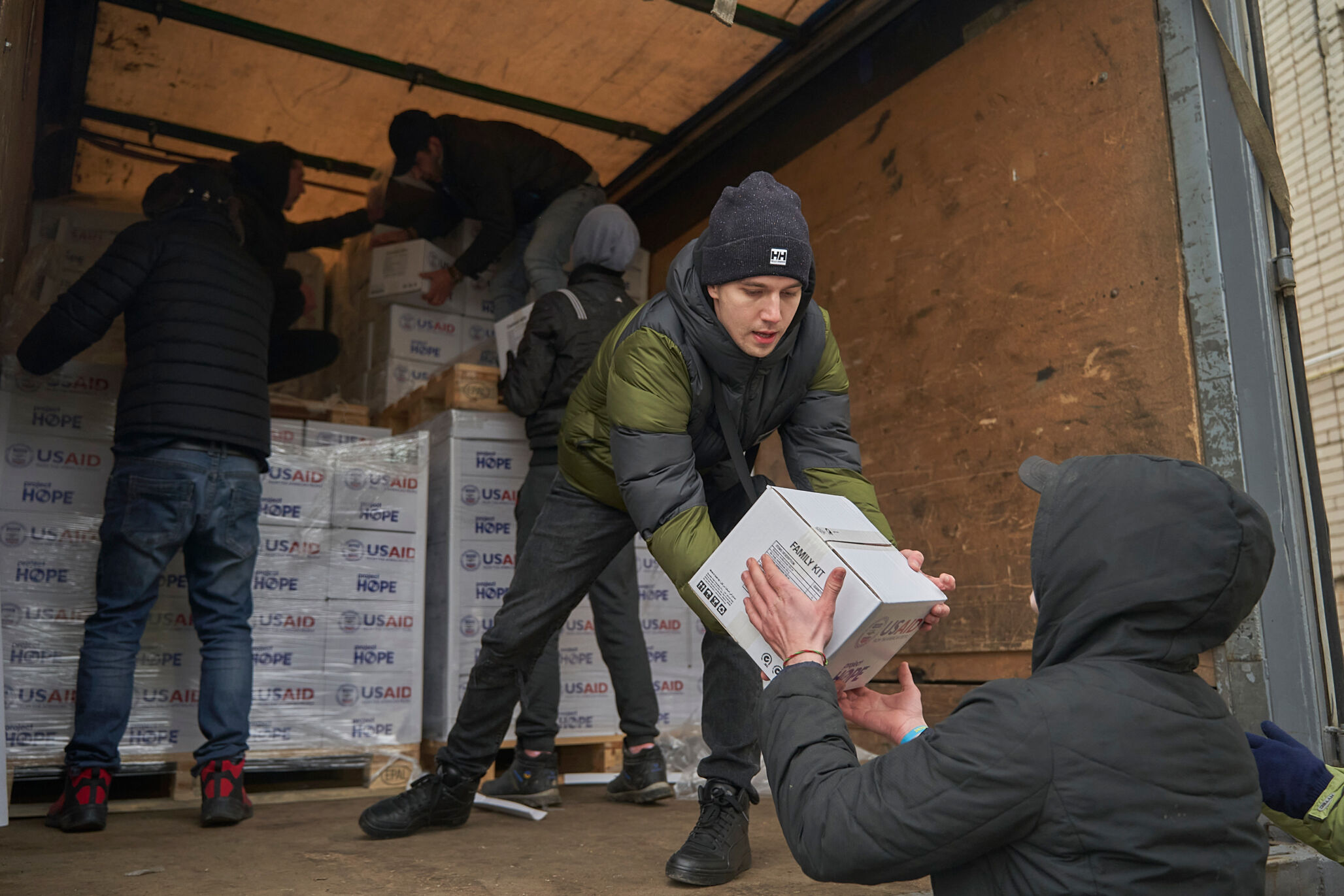

Ukraine
Implementing a comprehensive health and humanitarian response to Russia’s war in Ukraine
The Context
In February 2022, Russia launched a full-scale invasion of Ukraine, launching deadly missile attacks and occupying parts of the country, resulting in a devastating war that continues today. This was a major escalation following the 2014 Russian annexation of Crimea and the Donbas War in eastern Ukraine, which caused extensive civilian casualties and displacement.
As of February 2024, there have been 10,675 civilian deaths and 20,080 civilian injuries, within the entire Ukrainian population — more than 36 million people — living through unimaginable atrocities and enduring multiple humanitarian crises. Nearly 6.5 million Ukrainians are living as refugees in other countries and 3.7 million more are internally displaced, with 14.6 million Ukrainians – 40% of the population – in need of humanitarian assistance.
Russia’s invasion has devastated Ukraine’s healthcare system, especially in communities that have experienced heavy fighting. There have been more than 1,500 attacks on the healthcare system, destroying 708 health facilities and killing 199 health workers.
Since February of 2022, Project HOPE has been supporting the local health system by equipping health clinics with supplies and medicines, training health workers, and deploying mobile medical units (MMUs) to reach people in remote and frontline communities. We’ve reconstructed damaged health and community facilities and helped to mitigate the impacts of severe weather, power outages, and mass displacement. We’ve bolstered mental health and psychosocial support (MHPSS) services and secured access to essential water, sanitation, and hygiene (WASH) supplies.
Our Impact
Health System Strengthening
Over two years of full-scale war and constant attacks have had a severe impact on Ukraine’s health system, causing medicine and staff shortages and the disruption of primary healthcare services. In 2023, Project HOPE deployed 36 mobile medical units (MMUs) and provided nine ambulances to expand primary healthcare access and specialized medical transportation for frontline and rural communities. Project HOPE has also supported health workers by incentivizing 233 specialized health workers in 33 hospitals and providing a diverse series of high-quality trainings to anesthesiologists, trauma surgeons, pediatricians, and more, reaching over 6,000 health workers across Ukraine.

Mental Health and Psychosocial Support
Project HOPE continues to support the mental health and well-being of Ukrainians through mental health counseling, psychosocial support, and activities across 11 locations, reaching over 140,000 Ukrainians to date. MHPSS centers have provided people with social and recreation activities, education, skills and language classes, individual and group counseling, psychoeducation, art therapy, yoga and fitness classes, and empowerment workshops. Project HOPE has also provided surge staffing for psychologists and established telehealth counseling for staff and patients at 12 frontline health facilities in active conflict zones.
Water, Sanitation, and Hygiene (WASH)
To date, Project HOPE has distributed over 137,000 hygiene kits and non-food items, as well as 7 million liters of emergency drinking water to communities affected by Russian occupation and the destruction of the Kakhovka Dam. Project HOPE also purchased and delivered sanitation supplies for 18 health facilities, which will continue to serve an estimated 235,975 Ukrainians every year.

Winterization and Non-Food Items (NFIs)
As attacks on Ukraine’s energy infrastructure persisted in 2023, Project HOPE delivered 234 generators to 128 facilities — including hospitals and shelters for internally-displaced people — to restore essential services for Ukrainians across the country. And to mitigate the impact of harsh winter conditions, Project HOPE distributed 87,799 winterization NFIs, including electrical heaters, bedding, thermal clothing, and 333 tons of fuel.
Reconstruction and Rehabilitation of Health Facilities
Since 2022, 1,518 Ukrainian health facilities have been damaged and 195 have been destroyed. In collaboration with the Ministry of Health and local health authorities, Project HOPE has prioritized the rehabilitation of 12 health and social facilities in the Kyiv, Chernihiv, Kharkiv, and Kherson oblasts, which reach nearly 420,000 people every year. In 2023, Project HOPE successfully completed six projects, including the construction of a new ambulatory unit.
Our History in Ukraine
Project HOPE began working in Ukraine in 2002 with a life-skills program focused on drug use prevention, HIV prevention, and education for children in primary schools. Then, in 2007, Project HOPE began a five-year, USAID-funded HIV/AIDS Service Capacity project in Ukraine, which focused on the mobilization of communities most at risk of contracting and transmitting the disease. From 2012-2017, Project HOPE helped improve the health of Ukrainians by partnering with the Government of Ukraine to decrease the incidence and strain of tuberculosis (TB) on Ukraine’s health system and improve outcomes for people living with TB.



